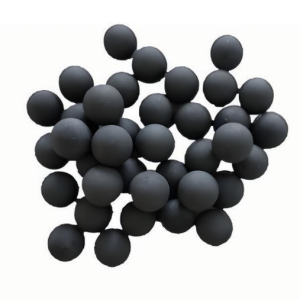Discover Premium Ceramic Products | Durability & Elegance United | Advanced Ceramics
1. Introduction
Just 24 hours ago, a major materials science conference in Germany highlighted breakthroughs in high-temperature ceramic processing, with silicon carbide crucibles taking center stage due to their unmatched thermal shock resistance and chemical inertness. As industries push toward more energy-efficient and durable furnace components, the demand for silicon carbide-based solutions is surging globally.

Silicon carbide crucibles are not just lab curiosities—they’re workhorses in foundries, semiconductor manufacturing, and even artisanal glassmaking. But what makes them stand out? And how do they compare to other advanced ceramics like silicon nitride or boron carbide? Let’s break it down.
2. Why Silicon Carbide Dominates High-Temperature Applications
Silicon carbide (SiC) is a compound of silicon and carbon with extraordinary hardness, thermal conductivity, and resistance to oxidation. These properties make silicon carbide crucibles ideal for melting non-ferrous metals like aluminum, copper, and zinc—even at temperatures exceeding 1600°C.
Unlike traditional clay-graphite crucibles, silicon carbide crucibles offer:
- Superior thermal shock resistance
- Longer service life
- Minimal metal contamination
- Higher energy efficiency due to better heat transfer
These advantages translate directly into cost savings and product purity—critical in aerospace and electronics manufacturing.
3. Silicon Carbide vs. Boron Carbide vs. Silicon Nitride
When evaluating high-performance ceramics, engineers often compare silicon carbide, boron carbide, and silicon nitride. Each has unique strengths, but their suitability varies by application.

Boron carbide vs silicon carbide: Boron carbide is harder and used primarily in armor and abrasive applications. However, it’s more expensive and less thermally conductive than silicon carbide, making it impractical for crucibles.
Silicon nitride, on the other hand, excels in mechanical strength and fracture toughness. Some niche applications use silicon nitride crucibles—especially where impact resistance is critical—but they lag behind silicon carbide in thermal conductivity and cost-effectiveness for high-volume melting operations.
While a silicon nitride crucible factory might produce specialized labware, industrial-scale metal processing still relies overwhelmingly on silicon carbide crucibles.
4. Beyond Crucibles: The Expanding Universe of Silicon Carbide Ceramics
The versatility of silicon carbide extends far beyond crucibles. Manufacturers now produce a wide array of components leveraging SiC’s robust properties.
Industrial uses include:
- RBSiC silicon carbide tile blocks for kiln linings
- Silicon carbide ceramic columns and rings for filtration and support
- Silicon carbide burner nozzles that withstand corrosive combustion environments
- Silicon carbide bricks for furnace construction
- Silicon carbide thermocouple protection tubes and porous ceramic tubes for high-temperature sensing
Even in plumbing, silicon carbide ceramic pipes and disc taps are gaining traction due to their wear resistance and smooth surface finish.

5. Unexpected Frontier: Silicon Carbide in Kitchenware
One of the more surprising trends is the rise of silicon carbide ceramic dinnerware. Brands are now marketing items like:
- Silicon carbide ceramic baking dishes and casserole dishes with lids
- Silicon carbide ceramic dinner plates (both white and black variants)
- Silicon carbide ceramic salad bowls, pasta bowls, and ramekins
- Silicon carbide butter dishes with lids and serving platters
Though not as common as traditional stoneware, these pieces leverage SiC’s thermal retention and durability—ideal for oven-to-table use. Some even mimic the aesthetic of Staub or Le Creuset, with ‘silicon carbide baking dish Staub’ becoming a curious search trend among eco-conscious cooks.
Note: While labeled as ‘silicon carbide ceramic,’ many consumer products use SiC as a reinforcing additive rather than pure monolithic SiC—still offering enhanced performance over standard ceramics.
6. Manufacturing and Material Purity Considerations
The performance of any silicon carbide component hinges on purity and fabrication method. Reaction-bonded (RBSiC), sintered (SSiC), and nitride-bonded variants each serve different needs.
For crucibles, high-purity silicon carbide is essential to prevent metal contamination. Similarly, the high purity silicon nitride powder market is growing, but it remains cost-prohibitive for most bulk applications.
Custom components—like a custom silicon nitride heat shield or silicon nitride plate—are feasible for aerospace, but silicon carbide offers the best balance of performance, availability, and price for most industrial users.
7. Conclusion
Silicon carbide crucibles remain the gold standard for high-temperature material processing, outperforming alternatives like boron carbide and silicon nitride in thermal efficiency, durability, and cost. Their utility is expanding into unexpected domains—from furnace tubes to dinner plates—proving that this century-old ceramic continues to evolve. As industries demand greener, more resilient materials, silicon carbide’s role will only grow.
Our Website founded on October 17, 2012, is a high-tech enterprise committed to the research and development, production, processing, sales and technical services of ceramic relative materials such as Silicon. Our products includes but not limited to Boron Carbide Ceramic Products, Boron Nitride Ceramic Products, Silicon Carbide Ceramic Products, Silicon Nitride Ceramic Products, Zirconium Dioxide Ceramic Products, etc. If you are interested, please feel free to contact us.

